Last updated on March 8th, 2024 at 04:48 am
The ZZ plant, scientifically known as Zamioculcas zamiifolia, is a resilient and visually appealing houseplant that has gained popularity for its low-maintenance nature and ornamental foliage. Originating from the drought-prone regions of Eastern Africa, this plant has adapted to thrive in arid conditions. Its ability to withstand neglect makes it an ideal choice for both novice and seasoned plant enthusiasts.
The ZZ plant goes by various common names, such as ZZ plant, Zanzibar Gem, or Emerald Palm. The nomenclature “ZZ” is derived from the unique botanical name Zamioculcas zamiifolia. Despite its exotic origins, it has become a staple in households around the world, appreciated not only for its aesthetic appeal but also for its remarkable resilience. Care of the ZZ plant is very important for maintaining its health and ensuring its longevity.
Care of the ZZ plant is very important to unlock its full potential as a hardy and visually striking indoor plant. Known for its ability to thrive in low-light conditions, it requires minimal effort to maintain. However, ensuring a balance in key factors like light exposure, appropriate watering, and suitable soil conditions is crucial. With proper care the ZZ plant can withstand neglect and become a green companion, enhancing the indoor environment. Care of the ZZ plant is critical to fostering a vibrant and healthy addition to any living space.
Contents
- 1 Surging Popularity and Indoor Application: A Growing Phenomenon
- 2 Understanding Essential Insights for Care of the ZZ Plant
- 2.1 Physical Characteristics:
- 2.2 Environmental Requirements:
- 2.3 Soil and Potting:
- 2.4 Watering Strategies:
- 2.5 Water Quality:
- 2.6 Consistency and Observational Vigilance:
- 2.7 Propagation and Repotting for ZZ Plant
- 2.8 Repotting Guidelines:
- 2.9 Regular Monitoring and Adjustments:
- 2.10 Yellowing Leaves or Leaf Drop:
- 2.11 Optimal Growing Conditions:
- 3 ZZ Plant in Varied Settings: Customizing Care for Versatility
- 4 FAQs
- 4.1 What is the ZZ plant, and why has it become popular for indoor settings?
- 4.2 What are the physical characteristics of the ZZ plant, and why is understanding them crucial for care?
- 4.3 What are the environmental requirements for the ZZ plant, and how do they impact its well-being?
- 4.4 Can ZZ plants coexist with other plants in indoor gardens, and what considerations are essential?
- 5 Author
Surging Popularity and Indoor Application: A Growing Phenomenon
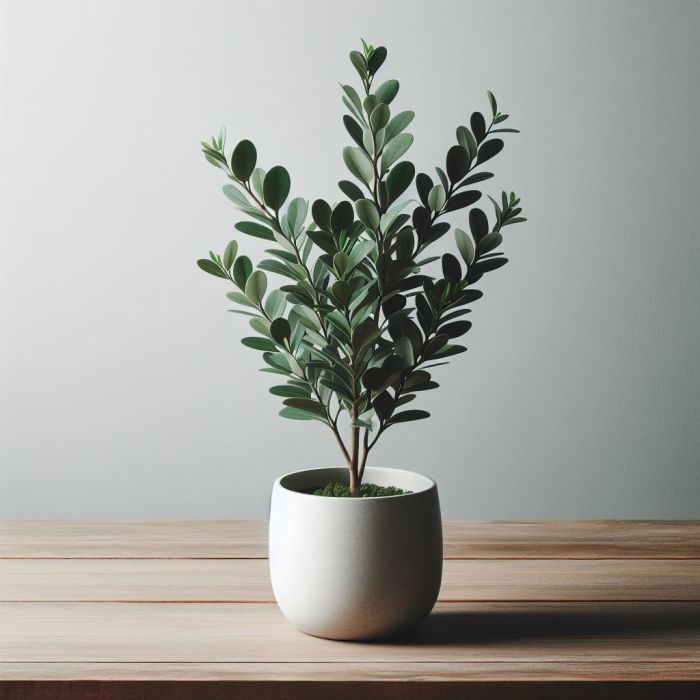
This plant has experienced a notable upswing in popularity, emerging as a favored choice for indoor greenery. Its robust characteristics and minimal maintenance needs have fueled its widespread adoption among plant enthusiasts. The ascent of the ZZ plant in popularity is linked to its resilience, making it an appealing option for those desiring lush foliage without the demands of intricate care.
Decorative Allure:
Functioning as an ornamental indoor plant, the ZZ plant has cemented its place in interior design. Its glossy, deep green leaves and upright growth pattern bring a touch of sophistication to diverse settings, ranging from residences to office spaces. The adaptability of the ZZ plant to low-light conditions enhances its versatility, allowing it to thrive where other plants might struggle. The incorporation of this plant into interior decor represents a burgeoning trend, with its aesthetic allure elevating the ambiance of living and working spaces.
Understanding Essential Insights for Care of the ZZ Plant
Physical Characteristics:
The ZZ plant possesses distinctive physical characteristics that contribute to its appeal as an indoor plant. Recognized for its dark green glossy leaves and upright growth pattern, it is crucial to understand the visual aspects for effective care of the ZZ plant. These features make the ZZ plant an aesthetically pleasing addition to indoor spaces, and caring for its unique physical attributes is integral to maintaining its vitality.
Environmental Requirements:
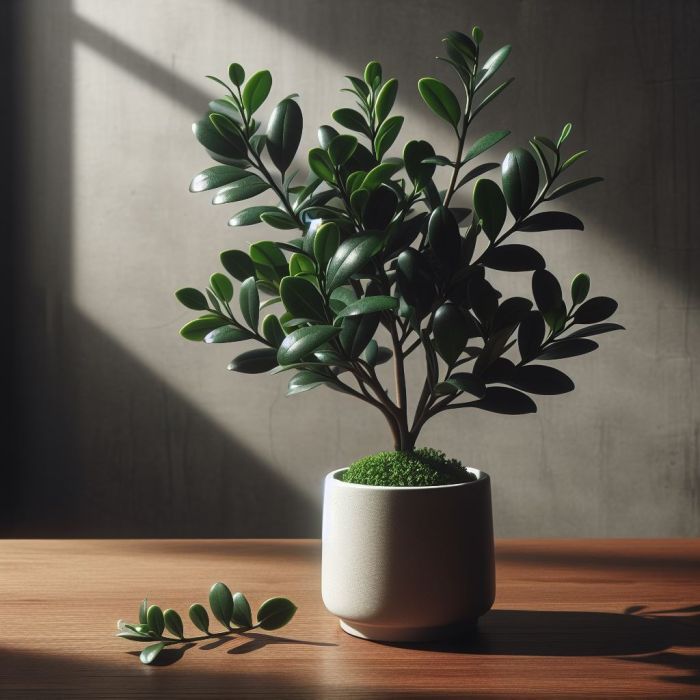
For the proper care of the ZZ plant, one must consider its specific environmental needs. The plant showcases exceptional adaptability, thriving in low-light conditions and preferring indirect sunlight. Integrating this understanding into the care routine is vital for sustaining the ZZ plant’s well-being. For the care of the ZZ plant ensuring that the environment provides the right temperature and humidity levels, as deviations can impact its overall health.
Soil and Potting:

An integral aspect of understanding ZZ plant care involves soil and potting considerations. The ZZ plant prefers well-draining soil, and choosing the right potting mix is essential. Acknowledging that for the care of the ZZ plant providing suitable soil conditions is important for optimal growth. Proper potting techniques contribute to the plant’s stability and support its overall health.
Watering Strategies:
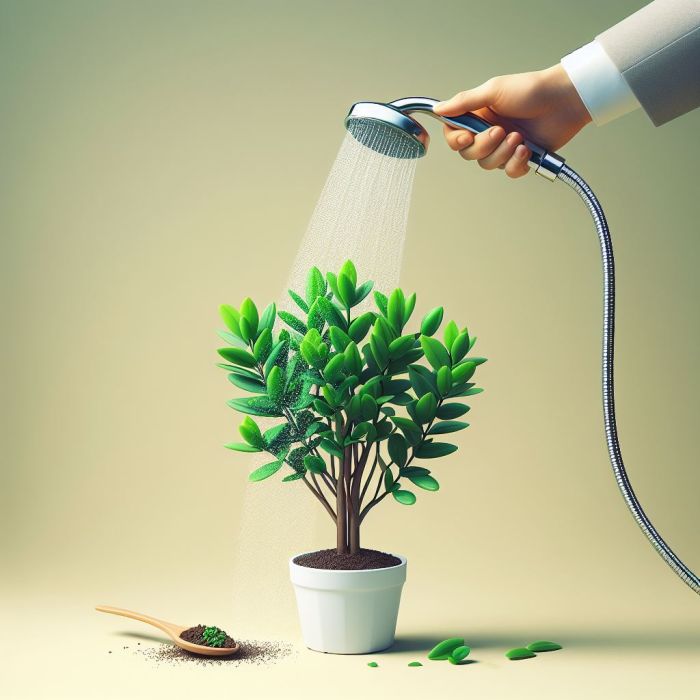
Within the holistic care of the ZZ plant, the watering routine assumes a pivotal role in determining its overall well-being. In the comprehensive care of the ZZ plant, recognizing the critical importance of both the frequency and quantity of water becomes paramount.
Achieving a delicate equilibrium between the plant’s inherent drought tolerance and its need for appropriate moisture levels is essential. Regularly assessing soil moisture and adjusting the watering schedule accordingly ensures the plant flourishes without succumbing to issues arising from either excessive or insufficient hydration.
Water Quality:
Diving into the care of the ZZ plant, the quality of water emerges as a significant factor influencing its health. Acknowledging that the care of the ZZ plant is of utmost importance underscores the need to employ filtered water. The ZZ plant, being sensitive to impurities found in tap water, such as salts and chemicals, underscores the critical nature of using filtered water. This addresses potential concerns and fosters a more favorable environment for the ZZ plant’s growth and development.
Consistency and Observational Vigilance:
Expanding the scope further, a more comprehensive approach involves integrating consistency and vigilant observation into the watering routine. Understanding that the care of the ZZ plant is very important emphasizes the need for a stable watering schedule. Consistency in timing and quantity establishes a reliable environment for the plant.
Additionally, maintaining regular observations of the plant’s foliage and soil conditions aids in the early detection of signs indicating overwatering or underwatering, allowing for timely adjustments to the care regimen.
Propagation and Repotting for ZZ Plant
In the holistic care spectrum for ZZ plants, delving into the intricacies of propagation methods becomes paramount. Care of the ZZ plant is very important, especially when exploring the various techniques for propagating new plants. Division of rhizomes and leaf cuttings stand out as primary methods, demanding meticulous attention to detail. Taking good care of the ZZ plants is important. It emphasizes the need to be careful when making new plants, so they can be as strong and healthy as the mature ZZ plants.
Repotting Guidelines:
As ZZ plants mature, the care routine expands to include strategic repotting. Understanding that the care of the ZZ plants is very important as it highlights the important role of repotting them at the right time. Signs such as root overcrowding or the plant outgrowing its current container indicate the critical need for repotting.
Adhering to comprehensive repotting guidelines, including selecting an optimal potting mix and minimizing disruption to the roots, becomes imperative. This thorough approach aligns seamlessly with the overarching philosophy that care of the ZZ plant is very important, influencing its holistic health and robust growth.
Regular Monitoring and Adjustments:
To take good care of the ZZ plants, it’s important to have a thorough plan. This means regularly checking on the plant and making changes as needed. Watching how the plant grows, checking the roots, and overall health is crucial. By doing these check-ups, you can make timely fixes and make sure your ZZ plant keeps growing well. This approach emphasizes the idea that taking care of ZZ plants is crucial for their long-term health and growth.
Comprehensive Approach to ZZ Plant Care: Addressing Common Issues with Holistic Strategies
When taking care of ZZ plants, it’s essential to pay close attention to possible problems. This means being careful about things that could harm the plants, like bugs or diseases. It’s not just about identifying pests like spider mites or mealybugs but also understanding how they live and what makes them show up.
Knowing that caring for ZZ plants is really important highlights the need for a well-rounded plan. This can include using natural bug sprays, neem oil, and sometimes bringing in helpful bugs to keep a healthy balance in the environment.
Yellowing Leaves or Leaf Drop:
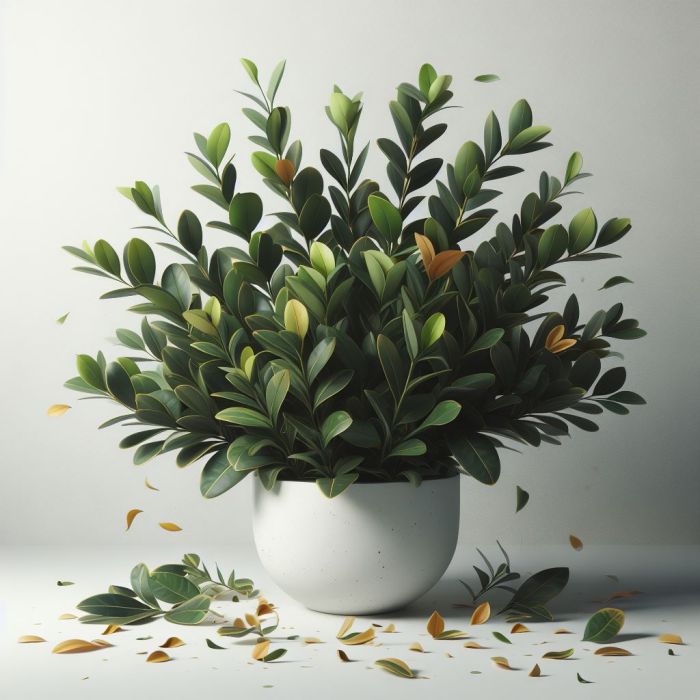
Dealing with yellow leaves or leaf drops in ZZ plants requires a careful and complete care approach. It’s important to understand and look at the whole picture when it comes to caring for ZZ plants, especially when these issues come up. To figure out what’s going on, you need to check if you’re giving too much water, too little water, or if the soil isn’t draining well.
Fixing the problem involves not just changing how you water the plant but also checking the soil, looking at the roots, and making sure there’s good airflow around the plant. This detailed plan fits perfectly with the idea that taking care of ZZ plants is crucial, and it highlights the importance of finding complete solutions to keep the plant healthy overall.
Optimal Growing Conditions:
Expanding the comprehensive approach, and considering optimal growing conditions as a preventative measure enhances the overall care strategy. Understanding the importance of care for ZZ plants reinforces the significance of maintaining suitable environmental conditions. Providing the right balance of light, temperature, and humidity reduces the susceptibility of ZZ plants to common issues.
Additionally, periodic preventive measures such as inspecting leaves, promoting good air circulation, and periodically cleaning the foliage contribute to a proactive care regimen.
ZZ Plant in Varied Settings: Customizing Care for Versatility
In the realm of comprehensive ZZ plant care, grasping its versatility across different settings is essential for optimizing its vitality. The importance of ZZ plant care is underscored, particularly in office environments where its low-light tolerance makes it a fitting choice. Recognizing that ZZ plant care is of utmost importance highlights the continual attention needed for factors like lighting conditions, temperature, and occasional dusting, ensuring a flourishing and low-maintenance green presence in office spaces.
Enhancing Home Decor:
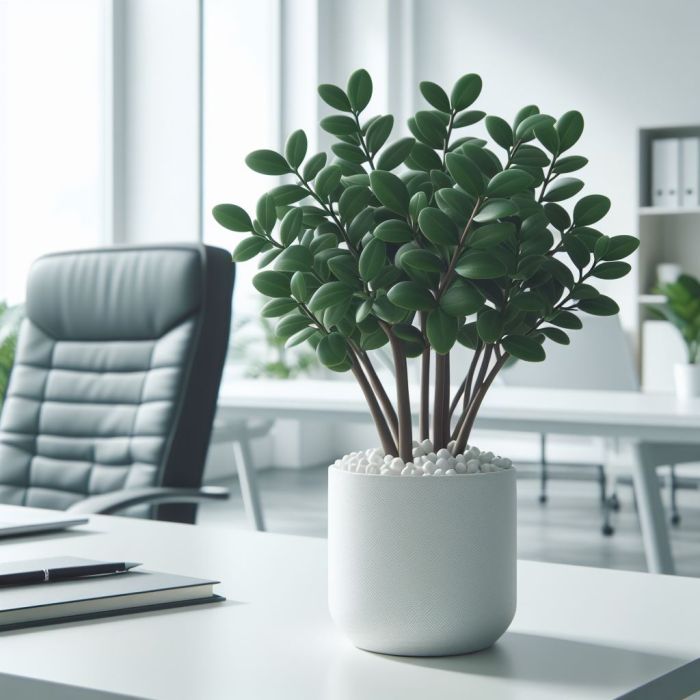
When incorporating ZZ plants into home decor, a deliberate approach to care takes precedence. ZZ plant care is crucial in residential settings, where it can seamlessly complement diverse interior styles. Suggestions for styling, such as placing ZZ plants in decorative pots or integrating them into plant arrangements, elevate their visual appeal.
Acknowledging that ZZ plant care is highly important emphasizes the necessity for routine grooming, vigilant monitoring, and adaptive care routines aligning with the dynamics of home environments.
Harmonizing with Companion Plants:
Recognizing ZZ plants’ multifaceted roles extends to their compatibility with companion plants. ZZ plant care is paramount, especially in the selection of suitable plant companions. Flourishing alongside other low-maintenance plants, ZZ plants contribute to a harmonious indoor garden. Embracing the understanding that ZZ plant care is vital involves choosing companions with similar care needs and ensuring appropriate spacing, fostering visually appealing and cohesive plant arrangements.
FAQs
What is the ZZ plant, and why has it become popular for indoor settings?
The ZZ plant, scientifically known as Zamioculcas zamiifolia, is a resilient and visually appealing houseplant renowned for its low-maintenance nature and ornamental foliage. Originating from Eastern Africa, it has gained popularity worldwide due to its adaptability to arid conditions and ability to thrive with minimal care.
What are the physical characteristics of the ZZ plant, and why is understanding them crucial for care?
The ZZ plant possesses distinctive physical characteristics, such as glossy, dark green leaves and an upright growth pattern. Understanding these features is crucial for effective care and maintaining its vitality. Care of the ZZ plant is very important, emphasizing the need for attentive care to its unique physical attributes.
What are the environmental requirements for the ZZ plant, and how do they impact its well-being?
The ZZ plant showcases exceptional adaptability, thriving in low-light conditions and preferring indirect sunlight. Integrating this understanding into the care routine is vital for sustaining its well-being. Care of the ZZ plant is very important, ensuring the environment provides the right temperature and humidity levels, as deviations can impact its overall health.
Can ZZ plants coexist with other plants in indoor gardens, and what considerations are essential?
ZZ plants can harmonize with other low-maintenance plants in indoor gardens. Recognizing that care of ZZ plant is vital involves choosing companions with similar care needs, ensuring suitable spacing, and fostering visually appealing and cohesive plant arrangements. Holistic care strategies contribute to a thriving indoor garden.
Discover the secrets to successfully caring for your ZZ plant with our comprehensive guide. From understanding its origins to addressing common issues like yellowing leaves, we provide insights into the physical characteristics, environmental requirements, and optimal growing conditions. Whether you’re a seasoned plant enthusiast or a beginner, our article emphasizes the importance of ZZ plant care and offers tailored tips for various settings, from offices to homes, ensuring a thriving and low-maintenance green companion.

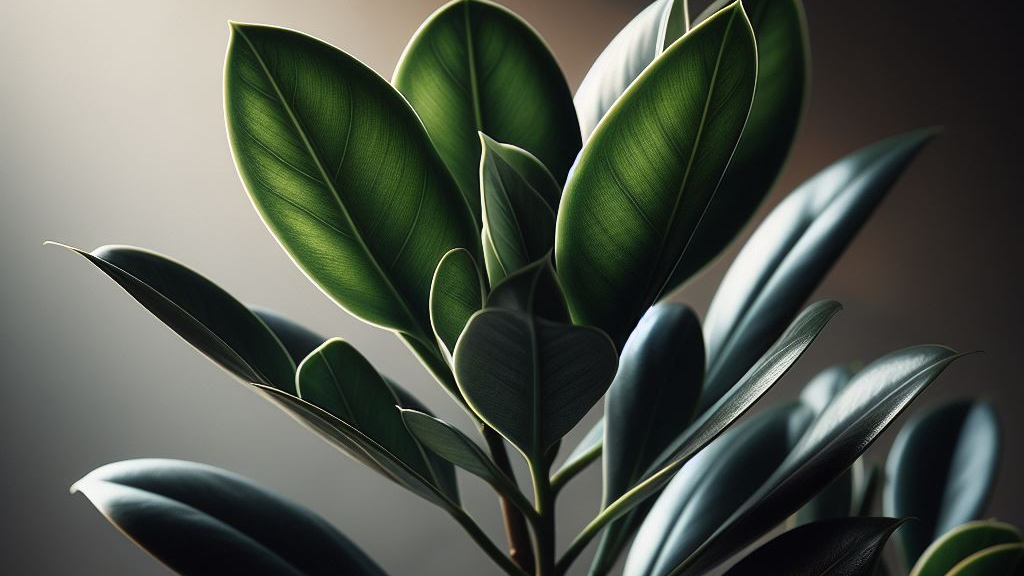
2 thoughts on “Essential Guide for the Care of the ZZ Plant”